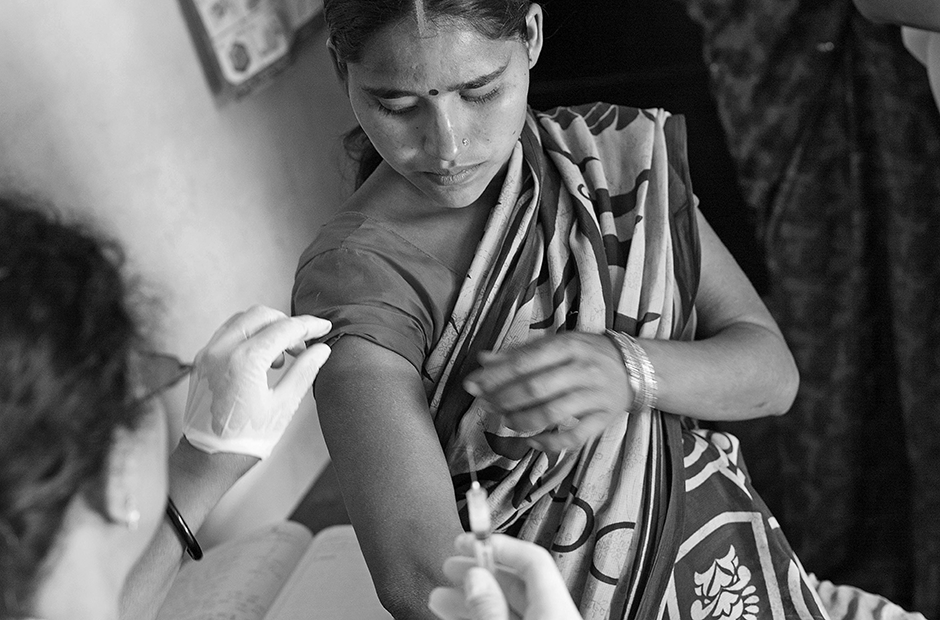The history of the Indian healthcare industry spans three eras: The age of the public sector, from the late 1940s to the mid eighties, when the government was the major service provider; the period dominated by the private sector (mid 1980s-early 2000); and the era of public-private participation from the early noughties, where the government moved from the role of provider to payer.
The $110-billion (Dh404 billion) industry, expected to grow at 12-15 per cent over the short term, is at a turning point today, with sweeping changes taking place across the board, says Dr Ashwini Aggarwal, Principal Consultant — Healthcare at PwC. “The traditional delivery model is likely to be replaced by patient- and quality-focused, technology-driven, specialised centres of healthcare excellence, providing holistic care.”
As the nature of illness changes from communicable to non-communicable diseases, services have expanded to cover preventive and rehabilitative care, and the setting has moved from hospitals to homes and offices. Greater patient participation and the advent of medical technology means digital health — from mobile health and wearables to telehealth and telemedicine — is more critical than ever, while government regulations on price and quality have also inspired investor confidence.
GN Focus looks at key moments that have shaped the industry.
Processes patented
Passed by the Indira Gandhi government, the 1970 act awarded patents only on processes (such as how a drug was produced) and not on products. This meant Indian pharmaceutical companies could reverse-engineer a drug and sell it at affordable prices.
“This set of reforms laid the foundation of the generic drugs industry in India,” explains Oommen Kurian, Research Fellow at the Indian think tank Observer Research Foundation. “It made medicines much cheaper for Indians as well as the developing world. During the peak of the AIDS crisis, Indian companies single-handedly brought down the cost of treatment considerably, saving millions.”
Even though India signed the product patents law in 2005 as part of the trade-related aspects of intellectual property rights, the country incorporated enough flexibilities into the provision to allow it to remain the pharmacy of the developing world.
Chirag Adatia, Partner at McKinsey & Company, ranks India as the world’s third-largest pharmaceuticals producer by volume and thirteenth by value.
Home-grown hospitals
Apollo Hospital, the first multi-speciality private sector hospital, opened in 1983. It was also the first hospital registered as a public listed company, says Kurian. At a time when hospitals were not allowed to tap bank funds, founder Dr Pratap Reddy managed an exemption.
“These chains, driven by the private sector, provide high-quality tertiary medical care to Indians and also cater to a large number of international patients travelling to India,” adds Adatia.
With high year-on-year growth, corporate hospitals are thriving, explains Kurian, penetrating even tier-2 urban markets.
As per estimates, the private sector provides almost 70 per cent of beds in the country.
Insurance liberalised
The liberalisation of the health insurance sector in 1999 triggered double-digit growth that has continued to date, allowing for more competition, innovation and higher penetration of products.
“Initially, many corporate hospitals had to design their own insurance schemes, as the industry was maturing,” says Kurian. “Now, with government-driven healthcare delivery and a financing model that implicitly promotes the insurance sector, coverage of the population has increased many times over the past decade, although the depth of the coverage is low. Tax exemptions for purchase of health insurance is also contributing to the rapid growth of the sector.”
Social inclusion
In an effort to increase access to healthcare and reduce expenses for extremely poor families, state and central governments have been launching schemes such as Aarogyasri (in then Andhra Pradesh) and Rashtriya Swasthya Bima Yojana (RSBY) since the late 2000s.
“In a country where healthcare expenditure is still one of the leading causes of impoverishment, social health insurance schemes such as RSBY have started making a dent in reducing the financial burden,” says Adatia. “Many progressive states have now developed their own version of schemes as well, although there’s a long way to go in reducing out-of-pocket expenditure.”
That’s not all. A universal health coverage scheme is being discussed in policy circles these days, says Dr Aggarwal, which will take India a step closer to the realisation of health as a fundamental right.
Immunisation
Since independence, India has seen improvements on many health indicators such as measles, mumps and rubella immunisation and infant mortality rate, though much more remains to be achieved, says Dr Aggarwal. Most notably, the World Health Organisation declared the country to be polio-free in 2014, following the success, first of the 1978 Expanded Programme on Immunisation, and then the Pulse Polio Immunisation drive, launched in 1995. India also eliminated maternal and neonatal tetanus in 2015.
Over the years, India’s Universal Immunisation Programme has been expanded to include newer vaccines such as against rotavirus. “If rolled out across the country, it could prevent close to 80,000 child deaths a year,” says Adatia.
About 87 per cent of India’s children currently achieve full immunisation.







